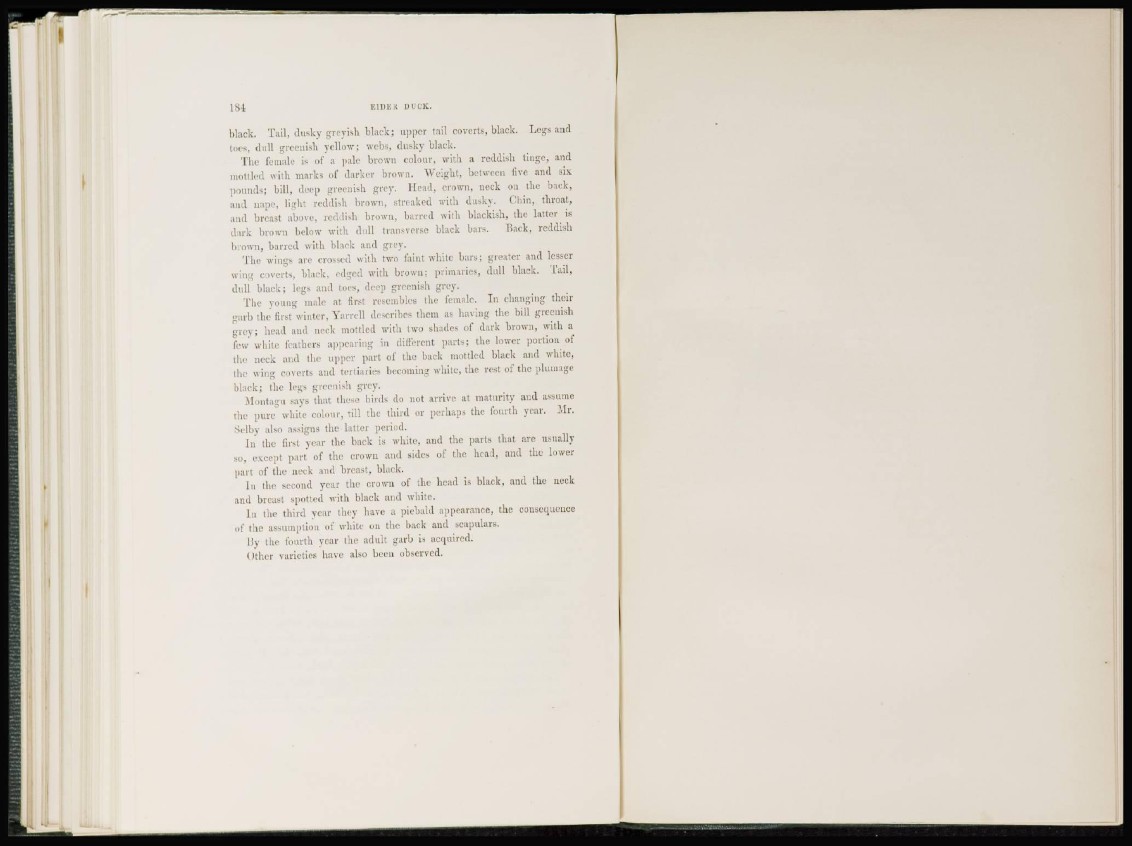
i 81 EIDE it D U C K.
black. Tail, dusky greyish black; upper tail coverts, black. Legs and
tees, dull greenish yellow; webs, dusky black.
The female is of a pale brown colour, with a reddish tinge, and
mottled with marks of darker brown. Weight, between five and six
pounds; bill, deep greenish grey. Head, crown, neck on the back,
and nape, light reddish brown, streaked with dusky. Chin, throat,
and breast above, reddish brown, barred with blackish, the latter is
dark brown below with dull transverse black bars. Back, reddish
brown, barred with black and grey.
The wings arc crossed with two faint white bars; greater and lesser
wing coverts, black, edged witli brown; primaries, dull black. Tail,
dull black ; legs and toes, deep greenish grey.
The young male at first resembles the female. In changing their
garb the first winter, Yarrell describes them as having the bill greenish
grey; head and neck mottled with two shades of dark brown, with a
few white feathers appearing in different parts; the lower portion of
tin' neck and the upper part of the back mottled black and white,
the wing coverts and tertiaries becoming white, the rest of the plumage
black; the legs greenish grey.
Montagu says that these birds do not arrive at maturity and assume
the pure white colour, till the third or perhaps the fourth year. Mr.
Selby also assigns the latter period.
I n the first year the back is wdtite, and the parts that are usually
s o , except part of the crown and sides of the head, and the lower
part of the neck and breast, black.
I n the second year the crown of the head is black, and the neck
and breast spotted with black and white.
In the third vcar they have a piebald appearance, the consequence
of the assumption of white on the back and scapulars.
By the fourth year the adult garb is acquired.
Other varieties have also been observed.